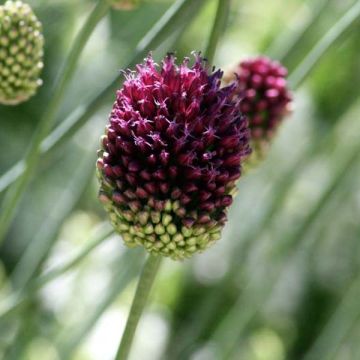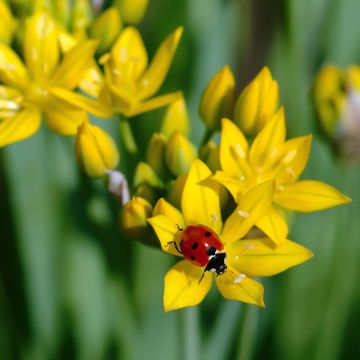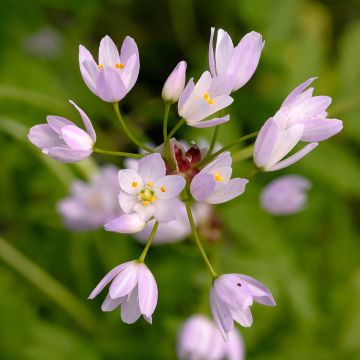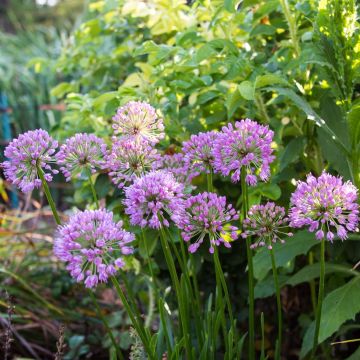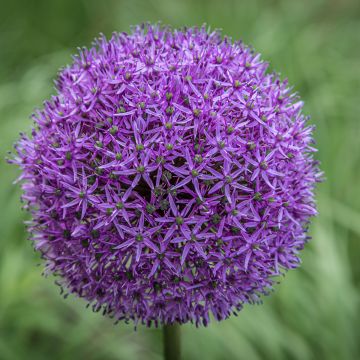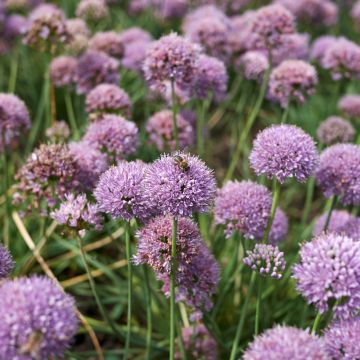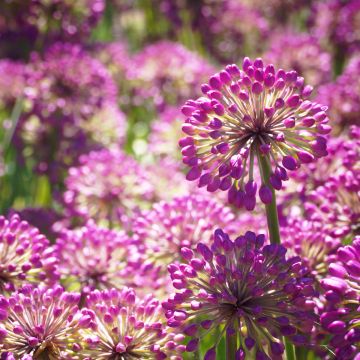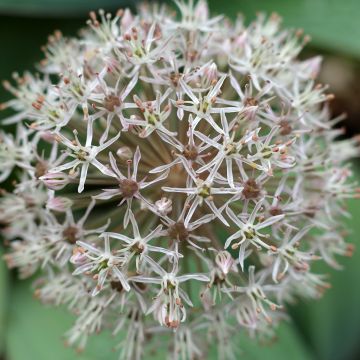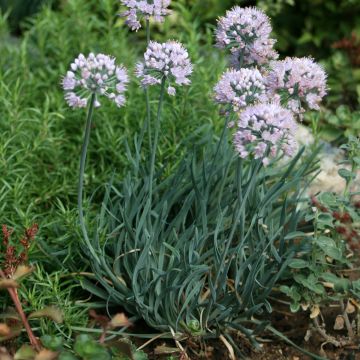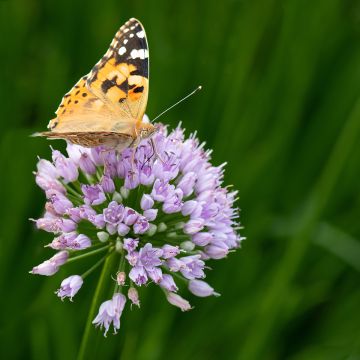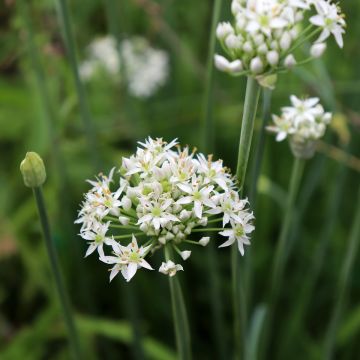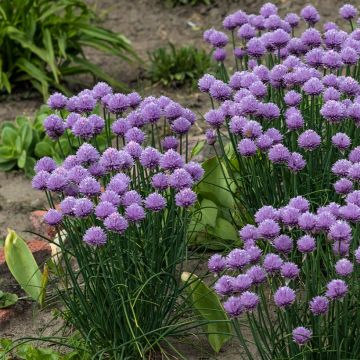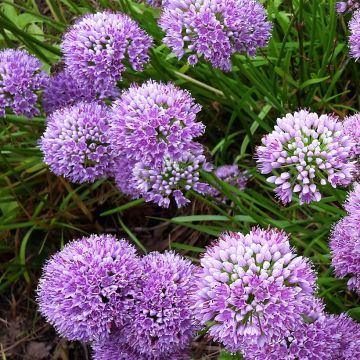

Allium zebdanense - Ail du Liban
Allium zebdanense
Allium zebdanense
Lebanon onion, Zebdan onion, Ornamental Onion
Leaves with a fairly mild taste
Marcel, 22/03/2025
Special offer!
Receive a €20 voucher for any order over €90 (excluding delivery costs, credit notes, and plastic-free options)!
1- Add your favorite plants to your cart.
2- Once you have reached €90, confirm your order (you can even choose the delivery date!).
3- As soon as your order is shipped, you will receive an email containing your voucher code, valid for 3 months (90 days).
Your voucher is unique and can only be used once, for any order with a minimum value of €20, excluding delivery costs.
Can be combined with other current offers, non-divisible and non-refundable.
Why not try an alternative variety in stock?
View all →This plant carries a 6 months recovery warranty
More information
We guarantee the quality of our plants for a full growing cycle, and will replace at our expense any plant that fails to recover under normal climatic and planting conditions.

Would this plant suit my garden?
Set up your Plantfit profile →
Description
Allium zebdanense, known as Lebanese Garlic, is a botanical species native to Syria, Lebanon, Turkey, and Israel. It is rare in cultivation. It is a small bulbous plant with a natural appearance, growing in dense clumps similar to some sedges, with its delicate white flowering appearing quite early in spring. Relatively easy to grow, this ornamental garlic thrives in well-drained, slightly alkaline soil. It can tolerate very dry summers but is sensitive to harsh winters. If the conditions are right, this edible plant will naturalise in the garden and return every year.
Allium zebdanense (synonym A. chionanthum) belongs to the Amaryllidaceae family, like all alliums. In the wild, it is found on sunny or shaded rocky slopes and in crevices. It is always found in well-drained, calcareous soils that are dry to wet. It is a perennial herbaceous plant with a small elongated bulb measuring about 1cm in height. The foliage emerges from the ground as early as October in mild climates and theoretically persists throughout winter, but it will be damaged by severe frosts. Under colder climates, it will emerge in late winter, and flowering will be later. This foliage consists of multiple fairly short, narrow, fine, shiny, semi-cylindrical leaves of a vibrant green, often curved at their tips. The leaves contain a fragrant latex. Flowering occurs in spring, between March and May, depending on the climate. The slender floral stems, 40cm (16in) tall, bear trailing umbels of 10 to 15 semi-open star-shaped white flowers, measuring 1.2cm (1in), a notable size compared to the plant. The outer three petals are striped with green. The fruits are small trigonous capsules containing a few small black seeds. The foliage dries out at the beginning of summer, while the bulb goes into dormancy. During this time of year, the soil should be rather dry.
Use this Lebanese garlic in dense clumps of 20 bulbs in a rock garden, along the edge of a cold-protected bed, among bushes, under deciduous trees, or in a container. Ideal in a waterless garden, it adapts elsewhere if it is protected from excessive moisture, both in summer and winter. For example, pair it with drought-tolerant shade plants such as liriope, lily of the valley, periwinkle, liverwort, and grecian windflower. Allium zebdanense is also a perfect companion to hostas: the garlic will flower when their foliage emerges and fade away when its companions display the beauty of their leaves and flowers. In sunny areas, create a lovely scene with red tulips and blue forget-me-nots. Finally, while all garlic is edible, this variety is not mentioned in literature for any culinary use.
Report an error about the product description
Plant habit
Flowering
Foliage
Botanical data
Allium
zebdanense
Amaryllidaceae - Alliaceae
Lebanon onion, Zebdan onion, Ornamental Onion
Allium chionanthum
Middle East
Other Allium
View all →Planting and care
Allium zebdanense is ideally planted during its resting period, no later than September, in well-drained, even rocky soil with a limestone tendency. Place the bulblets tightly in the sun or partial shade, at a depth of 7cm (3in). For a beautiful mass effect, plant the bulblets in groups of at least 10. Let them naturalise, without moving them. This plant dreads excessive humidity, both in winter and summer, but it shows some tolerance. Its hardiness is evaluated at -12°C (10.4°F). It is particularly suitable in a hot and dry climate, but it is also found naturalised in dunes in the Netherlands. Water in spring if it is dry. On the other hand, no watering is needed in summer.
The bulblets can be divided during the resting season, when the leaves turn yellow in May/June.
Pot cultivation is possible in good, soft and well-drained soil. Container cultivation allows the plant to be sheltered in winter in very cold regions.
Planting period
Intended location
Care
-
, onOrder confirmed
Reply from on Promesse de fleurs
Haven't found what you were looking for?
Hardiness is the lowest winter temperature a plant can endure without suffering serious damage or even dying. However, hardiness is affected by location (a sheltered area, such as a patio), protection (winter cover) and soil type (hardiness is improved by well-drained soil).

Photo Sharing Terms & Conditions
In order to encourage gardeners to interact and share their experiences, Promesse de fleurs offers various media enabling content to be uploaded onto its Site - in particular via the ‘Photo sharing’ module.
The User agrees to refrain from:
- Posting any content that is illegal, prejudicial, insulting, racist, inciteful to hatred, revisionist, contrary to public decency, that infringes on privacy or on the privacy rights of third parties, in particular the publicity rights of persons and goods, intellectual property rights, or the right to privacy.
- Submitting content on behalf of a third party;
- Impersonate the identity of a third party and/or publish any personal information about a third party;
In general, the User undertakes to refrain from any unethical behaviour.
All Content (in particular text, comments, files, images, photos, videos, creative works, etc.), which may be subject to property or intellectual property rights, image or other private rights, shall remain the property of the User, subject to the limited rights granted by the terms of the licence granted by Promesse de fleurs as stated below. Users are at liberty to publish or not to publish such Content on the Site, notably via the ‘Photo Sharing’ facility, and accept that this Content shall be made public and freely accessible, notably on the Internet.
Users further acknowledge, undertake to have ,and guarantee that they hold all necessary rights and permissions to publish such material on the Site, in particular with regard to the legislation in force pertaining to any privacy, property, intellectual property, image, or contractual rights, or rights of any other nature. By publishing such Content on the Site, Users acknowledge accepting full liability as publishers of the Content within the meaning of the law, and grant Promesse de fleurs, free of charge, an inclusive, worldwide licence for the said Content for the entire duration of its publication, including all reproduction, representation, up/downloading, displaying, performing, transmission, and storage rights.
Users also grant permission for their name to be linked to the Content and accept that this link may not always be made available.
By engaging in posting material, Users consent to their Content becoming automatically accessible on the Internet, in particular on other sites and/or blogs and/or web pages of the Promesse de fleurs site, including in particular social pages and the Promesse de fleurs catalogue.
Users may secure the removal of entrusted content free of charge by issuing a simple request via our contact form.
The flowering period indicated on our website applies to countries and regions located in USDA zone 8 (France, the United Kingdom, Ireland, the Netherlands, etc.)
It will vary according to where you live:
- In zones 9 to 10 (Italy, Spain, Greece, etc.), flowering will occur about 2 to 4 weeks earlier.
- In zones 6 to 7 (Germany, Poland, Slovenia, and lower mountainous regions), flowering will be delayed by 2 to 3 weeks.
- In zone 5 (Central Europe, Scandinavia), blooming will be delayed by 3 to 5 weeks.
In temperate climates, pruning of spring-flowering shrubs (forsythia, spireas, etc.) should be done just after flowering.
Pruning of summer-flowering shrubs (Indian Lilac, Perovskia, etc.) can be done in winter or spring.
In cold regions as well as with frost-sensitive plants, avoid pruning too early when severe frosts may still occur.
The planting period indicated on our website applies to countries and regions located in USDA zone 8 (France, United Kingdom, Ireland, Netherlands).
It will vary according to where you live:
- In Mediterranean zones (Marseille, Madrid, Milan, etc.), autumn and winter are the best planting periods.
- In continental zones (Strasbourg, Munich, Vienna, etc.), delay planting by 2 to 3 weeks in spring and bring it forward by 2 to 4 weeks in autumn.
- In mountainous regions (the Alps, Pyrenees, Carpathians, etc.), it is best to plant in late spring (May-June) or late summer (August-September).
The harvesting period indicated on our website applies to countries and regions in USDA zone 8 (France, England, Ireland, the Netherlands).
In colder areas (Scandinavia, Poland, Austria...) fruit and vegetable harvests are likely to be delayed by 3-4 weeks.
In warmer areas (Italy, Spain, Greece, etc.), harvesting will probably take place earlier, depending on weather conditions.
The sowing periods indicated on our website apply to countries and regions within USDA Zone 8 (France, UK, Ireland, Netherlands).
In colder areas (Scandinavia, Poland, Austria...), delay any outdoor sowing by 3-4 weeks, or sow under glass.
In warmer climes (Italy, Spain, Greece, etc.), bring outdoor sowing forward by a few weeks.































